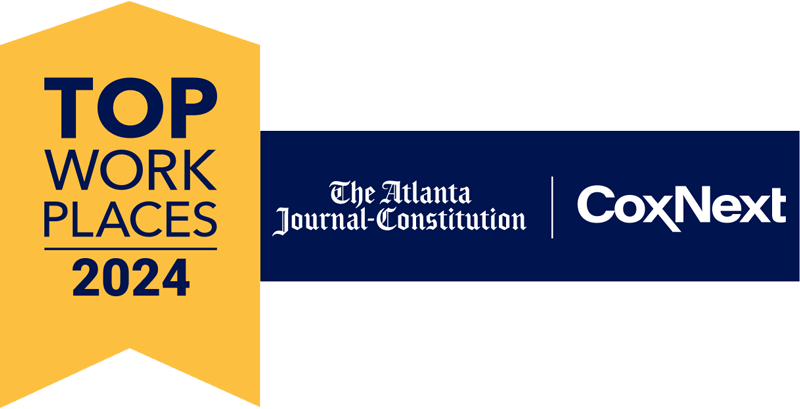
The Federal Reserve (Fed) has been on pause in its planned program of interest rate reductions since the beginning of this year. There is great anticipation among investors as to when they will resume downward moves. The answer is that no one knows. The Fed itself probably does not even know. In this brief paper, we will discuss some of the issues surrounding the Fed and the challenges it faces in achieving the appropriate policy.
Right now, the Fed finds itself in a difficult position. Their mandate is to maintain full employment while keeping inflation under control. Full employment is considered to be somewhere around an unemployment rate of 4%. On the inflation front, the Fed has set a target of 2% sustained inflation. The pressure point for the Fed is that the labor market appears to be weakening while inflation remains substantially above the 2% target. The result of rising inflation and a weakening labor market is stagflation. If this is currently the case, it should be considered a mild case since the deviations from trend are minor. The trick is to not let stagflation settle in.
The Fed has much to consider. At some point, they may be forced to decide to prioritize one of their two mandates. If inflation remains stubbornly above target while the labor market keeps getting softer, they will have to decide whether to remain in what they consider to be a mildly restrictive mode. This means holding the policy rate at elevated levels for longer, maintaining pressure on demand in hopes of gradually bringing inflation down. If they consider employment to be a more important priority, they can begin a program of further ease, which would include lowering the federal funds rate, providing liquidity, and signaling a more accommodative stance to support hiring and growth. Even if inflation were to continue to rise, raising interest rates does not appear to be an option.
The Fed’s stated reason for pausing was to let more time pass in order to assess the impact of what is considered a radical tariff policy and the possibility that it could lead to higher inflation. The evidence is still out on this question. To date, the inflationary impact of new tariffs has been minimal, although recent inflation reports suggest momentum for price pressures ahead. It is still early in the tariff game as President Trump’s tariff deadline was only passed on August 13. Furthermore, up to this point, there has been a total lack of clarity as to where the eventual tariff rate will settle in, which may mean that many importers are bearing the tariff cost out of uncertainty related to the eventual level of tariffs.
The Fed has another problem. They, and in particular Fed Chair Jerome Powell, are under intense pressure from President Trump and Treasury Secretary Bessent to lower interest rates substantially. We find this to be unfortunate. Such pressure threatens the independence of the Fed, long considered one of the more sacrosanct institutions. Whatever their decision on federal funds eventually turns out to be, the motives for such will be questioned. Attempting to chart the correct monetary policy is difficult enough on its own without outside interference. Fed independence is also important in maintaining the dollar as the central player in the global economy.
The Fed is well aware of the fact that the economy is in a slowing trend. Even though the most recent Gross Domestic Product (GDP) report indicated 3% growth year-over-year, it was a bounce-back quarter from the first quarter’s report of -0.5%. Both quarters were heavily influenced by trade-related activity in response to tariff threats. Looking inside the GDP report, consumption was soft, and growth in real final sales to domestic purchasers was down to 1.2%, an anemic level.
The softening trend was reinforced by the latest employment report. Heavy downward revisions to the previous two quarters resulted in only 35,000 new jobs on average over the last three months. This is near stall speed. The unemployment rate only rose to 4.2%, still considered as near full employment, but this steady performance is undermined by the fact that much slower immigration was a support factor for the unemployment rate. A rapid drop in immigration slows the increase in the work force and limits the impact of lower job growth.
Wall Street is observing all the above with great interest. Investors are always in favor of lower interest rates and surveys indicate the belief that the Fed will resume rate cuts in September. Perhaps so, but before the next Fed meeting there will be more inflation and employment data to review.
It is fair to label us at Crawford as inflation hawks. Our firm has lived through the worst of inflation periods, and we remember how harmful it was for the overall economy. If the Fed is forced to choose between inflation control and employment support, we hope they will opt for the former. In the long run, an independent Fed, with ample tools at its disposal, should reach its goal of low and sustained inflation, providing a strong foundation for a healthy and growing economy.
The opinions expressed are those of Crawford Investment Counsel (“Crawford”) as of the date of publication and subject to change without notice. Crawford is an investment adviser registered with the U.S. Securities and Exchange Commission. Registration does not imply a certain level of skill or training. More information about Crawford’s investment advisory services can be found in its Form ADV Part 2 and/or Form CRS, which is available upon request.
CRA-2508-7
The opinions expressed herein are those of Crawford Investment Counsel and are subject to change without notice. This material is not financial advice or an offer to sell any product. Forward-looking statements cannot be guaranteed. This document may contain certain information that constitutes “forward-looking statements” which can be identified by the use of forward-looking terminology such as “may,” “expect,” “will,” “hope,” “forecast,” “intend,” “target,” “believe,” and/or comparable terminology. No assurance, representation, or warranty is made by any person that any of Crawford’s assumptions, expectations, objectives, and/or goals will be achieved. Nothing contained in this document may be relied upon as a guarantee, promise, assurance, or representation as to the future. Crawford Investment Counsel is an investment adviser registered with the U.S. Securities and Exchange Commission. Registration does not imply a certain level of skill or training.
These Perspectives on Macroeconomics
600 Galleria Parkway
Suite 1650
Atlanta, Georgia 30339
Main: 770.859.0045
Fax: 770.859.0049
Email: info@crawfordinvestment.com

Copyright © 2025 | Crawford Investment Counsel, Inc. | All Rights Reserved.
Crawford Investment Counsel, Inc. (“Crawford”) is an independent investment adviser registered under the Investment Advisers Act of 1940, as amended. Registration does not imply a certain level of skill or training. More information about Crawford Investment Counsel, including our investment strategies, fees and objectives, can be found in our Form ADV Part 2A and our Form CRS.
Web Site Development by: Goodwood Consulting
You are now leaving the Crawford Investment Counsel website and accessing the
Crawford Investment Funds website.
You are now leaving theCrawford Investment Funds website
and accessing the Crawford Investment Counsel website.
To help us personalize the site to your needs,
please select one of the following that best describes you.
You are now entering the area of the Crawford Investment Counsel website
that is for Consultant & Investment Professional Use Only.
You are now leaving the Crawford Investment Funds website and accessing the
Ultimus Fund Solutions website.
You are now entering the area of the Crawford Investment Counsel website
that is for Endowment & Foundation Use Only.